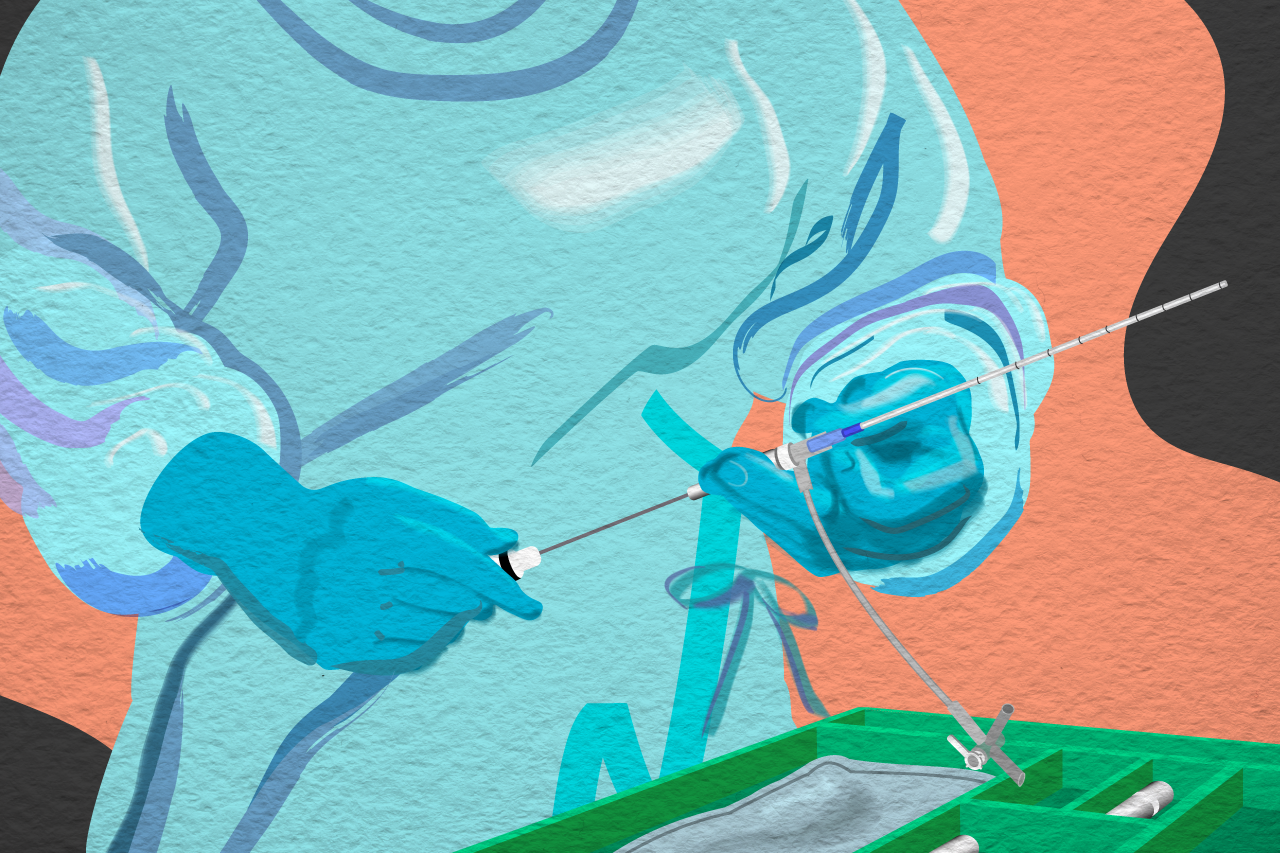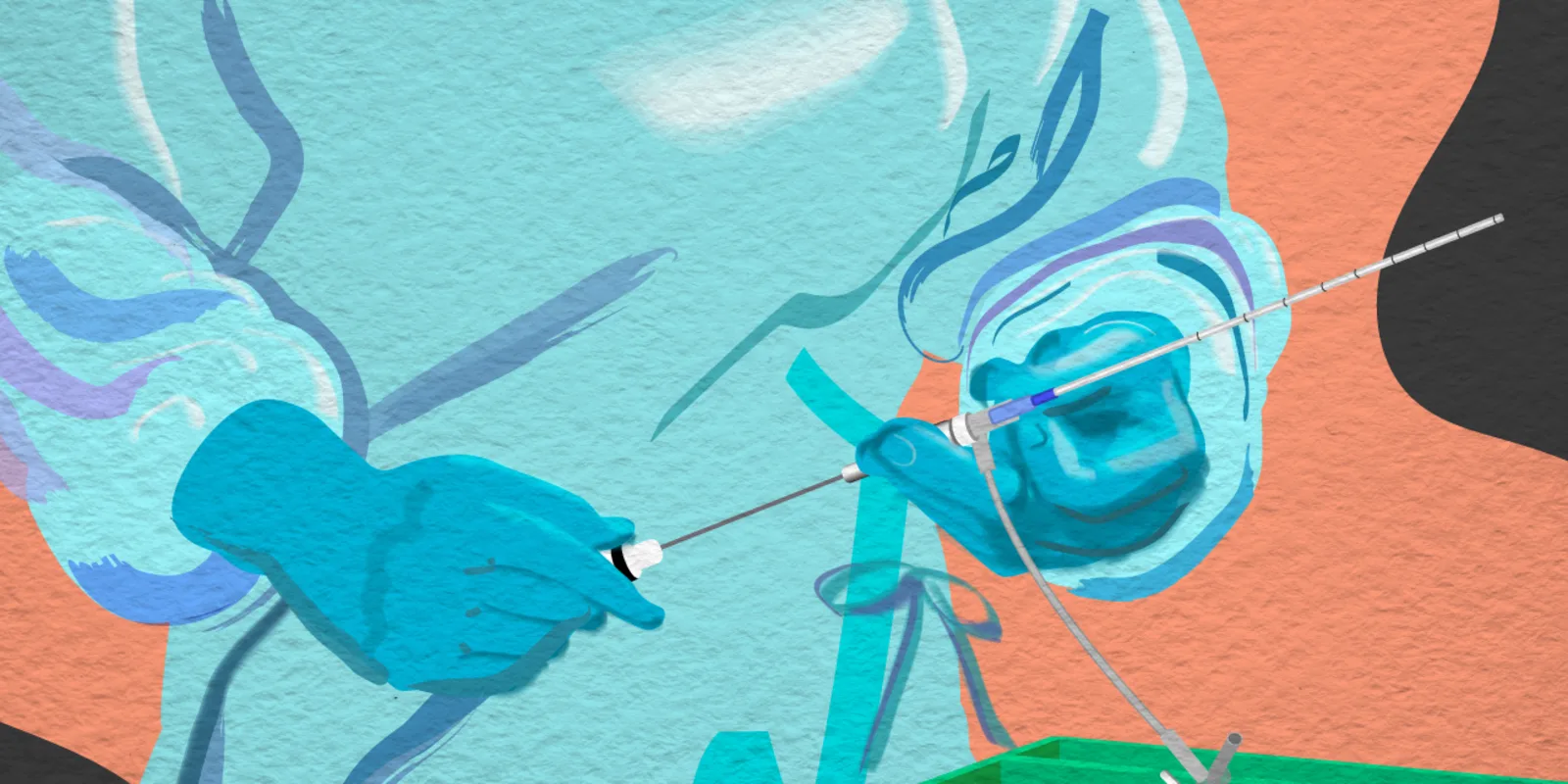
It was a regular MICU night. Just the intern and I managing our 15 patients, one eager bed sitting open, awaiting the next medical emergency that required ICU-level care. It’s never a quiet night on the unit — we don’t use that word — but it sure didn’t have much pace to it. The fellow was running around the hospital managing problems in all the other ICUs. She would pop back into our MICU on occasion to check in, something I was always grateful for as there was always a piece of advice on patient care to be shared. This time she walked in and, knowing I was a procedure-hungry resident, asked if I wanted to assist with a thoracentesis on another unit. My first thoracentesis.
If you count the number of “skills lab thoras” I had done, this certainly wouldn’t be my first, but the thought of finally attempting a thoracentesis on a living, breathing person just about took my breath away. I think I said yes before I’d even checked to make sure I had nothing else pulling for my attention. My intern could manage things for a bit — right? I’d only be a phone call away, or maybe 30 seconds at most.
I’d never left the MICU at night to head to a different ICU. Wandering through the hospital at night always felt a little surreal. It never seemed quiet enough. Kind of like what I imagined a Las Vegas hotel might be like — filled with people up and about 24/7.
The patient in question was in the TSICU, not to be confused with the STICU next door. She looked a hot mess — though I couldn’t quite tell you why at first glance. The fellow had me listen to her lungs and identify the effusion before we pulled out the ultrasound. It was easy to hear the problem. A large left-sided pleural effusion restricting her lung space.
A family member had signed the consent — our patient sat jaundiced and confused in her bed, but aware enough to understand the basics. We reminded her of the fluid that had accumulated on her left side. We talked through the process briefly — inserting a needle to drain the fluid so she’d breathe more comfortably. We talked through the risks and that we’d get a chest xray afterwards to watch for lung collapse, and that we’d keep watching her closely in the ICU. She nodded along. It was unclear if it was the bilirubin or the hour that had her looking so fatigued. I suspected the former.
As we set up for the procedure, the fellow had me talk through the critical steps. I pointed out all the supplies as I spoke. Drape. Gloves. Lidocaine. Needles. Suction canister. Tubing. I’d gone through a kit about a dozen times in preparation for the real thing, but it felt a little more ominous and foreboding now as I looked at the massive needle I was about to insert into this woman’s back.
Next question: What was most important? Positioning!
It took a team of three nurses and the fellow and I to sit up our patient and hunch her over the tray table at the edge of her bed. She kept trying to fall over, as if wanting to just go back to sleep. It was three in the morning after all, but sometimes a procedure couldn’t wait. I checked that she was secure a few times — the last thing I wanted was her to slip as I inserted the needle.
We pulled out the ultrasound and the fellow guided me through the imaging — looking for the slide of lung against pleura and the giant black void on the screen that indicated the effusion. Mark the spot. Clean. Drape. Glove up. Lidocaine. The steps had been ingrained in me through so many practice sessions that it seemed easy — almost intuitive. Until that giant needle ended up in my grasp.
The actual thoracentesis needle looked more like a torture device than a means of therapy. The prospect of lung damage, bleeding and lung collapse suddenly seemed a little more realistic. How could someone not have a complication with this giant needle sticking out of their back? I’d long been a believer in confidence as being shaky wasn’t going to make any procedure to smoother. It was the same fact I’d clung to the first time I’d done an LP. Regardless, I felt that sensation of uncertainty sneaking in. Maybe the fellow should do this? What if I messed it up? Was the patient still sitting up and stable? Should I just double and triple check the placement of my mark again? The ultrasound was just out of reach. I palpated the space between the ribs again. I felt a little bead of sweat drip down my brow. Did the patient just slide a bit? I sent a hesitating glance at my fellow.
Her look told me passing the needle wasn’t an option. I’d have to do a thoracentesis start to finish at some point in my career. There was no time like the present. I advanced the needle through the skin, carefully avoiding bone, trying to follow the same track I’d made with the lidocaine needle a few minutes before and in about a dozen mannequins. Prospects of lung damage clung to the back of my mind.
There was a discouraging resistance that I hadn’t felt with the smaller lidocaine needle. Was I on the same track? I was pretty sure I was. Did it feel like bone? No — I’d felt that when did my first LP. This didn’t have the same crunch and density.
A little more pressure and I felt a POP. The needle flew into the pleural space and clear yellow fluid poured out. I was in. Had I gone too far? I should have been more gentle. What if that tip had just grazed her lung? The patient seemed fine — she had slid a bit in the last few minutes of my deliberation, but she was still breathing comfortably.
We drained about a liter of fluid from her pleural space and sent a bit extra to the lab. And that was it. Removed the needle. Cleaned up. And let our exhausted patient relax back into bed. She seemed a bit better. She still hadn’t spoken a clear word since we started. The only evidence of the procedure was now an innocuous band-aid on her back.
Astrid Grouls, MD is an internal medicine resident in Houston, Texas with plans to pursue a fellowship in Palliative and Hospice Medicine. She enjoys ethics, medical history, painting, cooking, snail mail and spending time with her cat.







